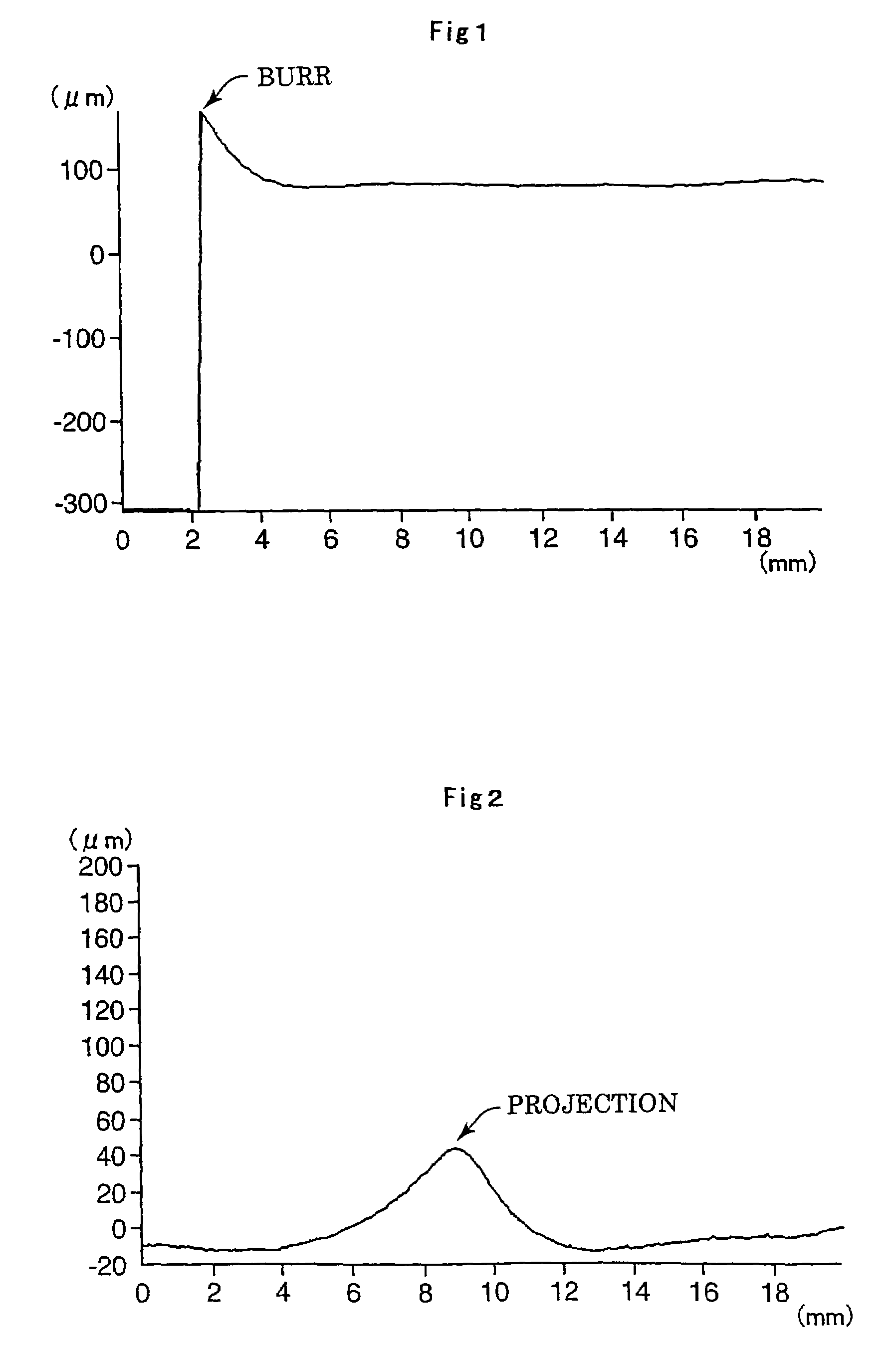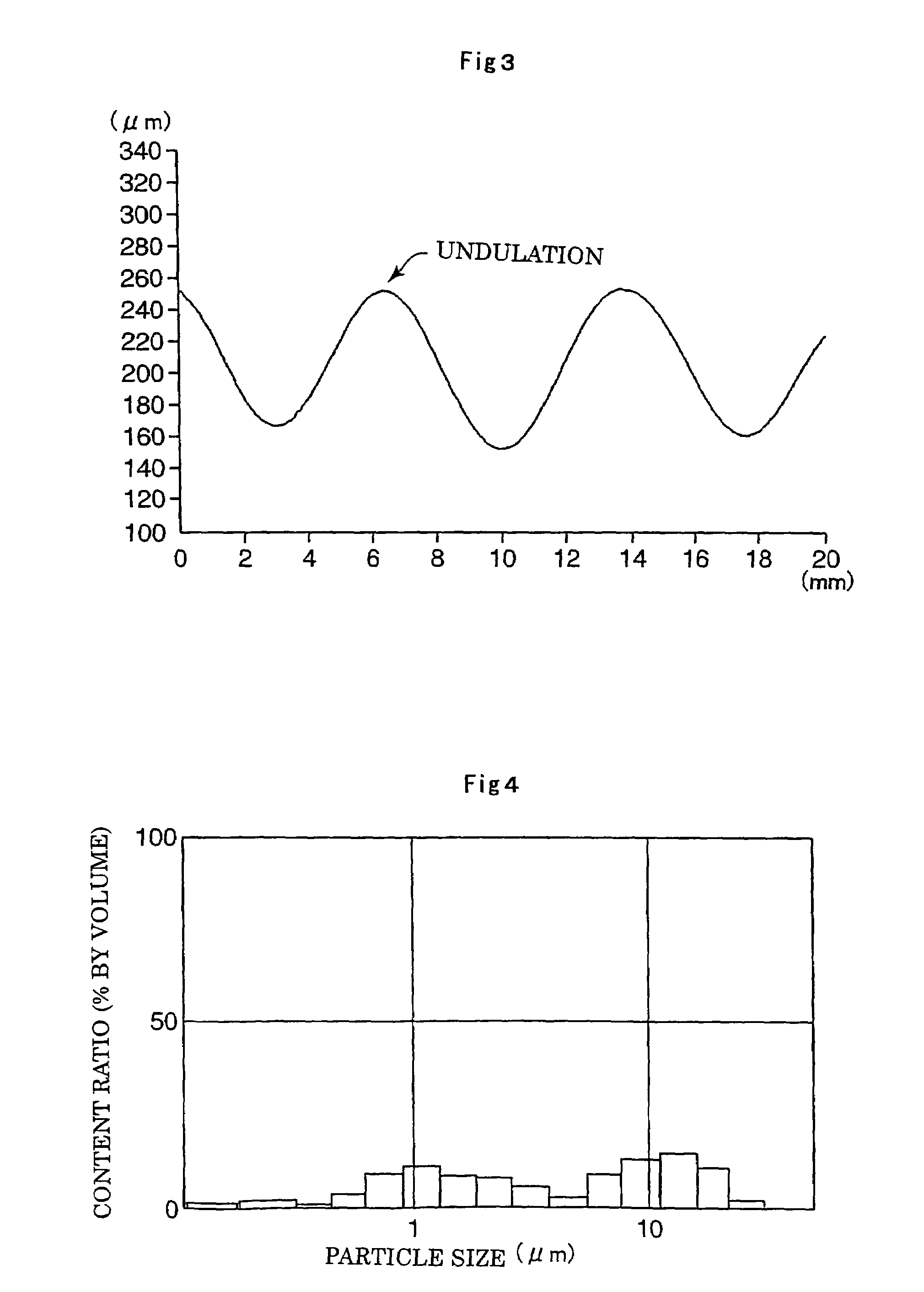Solid oxide type fuel cell-use electrode support substrate and production method therefor
a technology of solid oxide type fuel cell and electrode support substrate, which is applied in the manufacture of cell components, final product products, electrochemical generators, etc., can solve the problems of limit in the decrease of ionic conductance loss, achieve sufficient strength, advance sintering, and satisfy gas permeability/diffusibility
- Summary
- Abstract
- Description
- Claims
- Application Information
AI Technical Summary
Benefits of technology
Problems solved by technology
Method used
Image
Examples
example 1
[0141](Formation of Setters)
[0142]The following were mixed to produce a mixed powder as a starting material: 40% by mass of 8% by mole yttrium oxide stabilized zirconia powder (hereinafter referred to as the “8YSZ”) wherein the average particle size thereof was 0.5 μm and the particle size of the 90% volume thereof was 1.2 μm; and 60% by mass of nickel oxide powder obtained by decomposing nickel carbonate powder thermally wherein the average particle size was 4.5 μm and the particle size of the 90% volume was 8 μm.
[0143]To 100 parts by mass of this mixed powder were added 12 parts by mass of an acrylic binder made of a copolymer obtained by use of 79.5% by mass of isobutyl methacrylate, 20% by mass of 2-ethylhexyl methacrylate and 0.5% by mass of methacrylic acid as monomer units, 40 parts by mass of toluene and ethyl acetate (ratio by mass: 2 / 1) as solvents, and 2 parts by mass of dibutyl phthalate as a plasticizer. The mixture was kneaded in a ball mill and then defoamed, and the ...
example 2
[0153]In the item “(1) Formation of green sheet for electrode support substrate” in Example 1, a slurry having no adjusted viscosity, obtained by treatment with a ball mill in the same way as in Example 1, and a slurry having a viscosity adjusted to 50 poise with the pressure-reducing defoaming machine were prepared. The slurry having no adjusted viscosity was added to the slurry having the adjusted viscosity. At this time, the addition was performed to make the total mass of the 3YSZ powder and the nickel oxide powder in the slurry having the adjusted viscosity equal to the total mass of the 3YSZ powder and the nickel oxide powder in the slurry having no adjusted viscosity.
[0154]Next, the viscosity of the mixed slurry was adjusted to 50 poise (25° C.) by pressure-reducing defoaming in the same way. The slurry was kept at room temperature while stirring fans in the slurry were rotated at a rotating speed of 12 rpm for 20 hours. The resultant green-sheet-producing slurry was used and...
example 3
[0156]In the item “(1) Formation of green sheet for electrode support substrate” in Example 1, the viscosity of the slurry was adjusted to 60 poise by pressure-reducing defoaming. The slurry was kept at room temperature while the stirring fans were rotated at a rotating speed of 18 rpm for 30 hours. Subsequently, a gap based on the doctor blade was adjusted to form a green sheet having a thickness of 0.35 mm. In the very same way as in Example 1 except the above, an electrode support substrate about 12.5 cm square and about 0.3 mm thick was yielded.
PUM
| Property | Measurement | Unit |
|---|---|---|
| viscosity | aaaaa | aaaaa |
| particle size distribution | aaaaa | aaaaa |
| particle size distribution | aaaaa | aaaaa |
Abstract
Description
Claims
Application Information
 Login to View More
Login to View More - R&D
- Intellectual Property
- Life Sciences
- Materials
- Tech Scout
- Unparalleled Data Quality
- Higher Quality Content
- 60% Fewer Hallucinations
Browse by: Latest US Patents, China's latest patents, Technical Efficacy Thesaurus, Application Domain, Technology Topic, Popular Technical Reports.
© 2025 PatSnap. All rights reserved.Legal|Privacy policy|Modern Slavery Act Transparency Statement|Sitemap|About US| Contact US: help@patsnap.com



